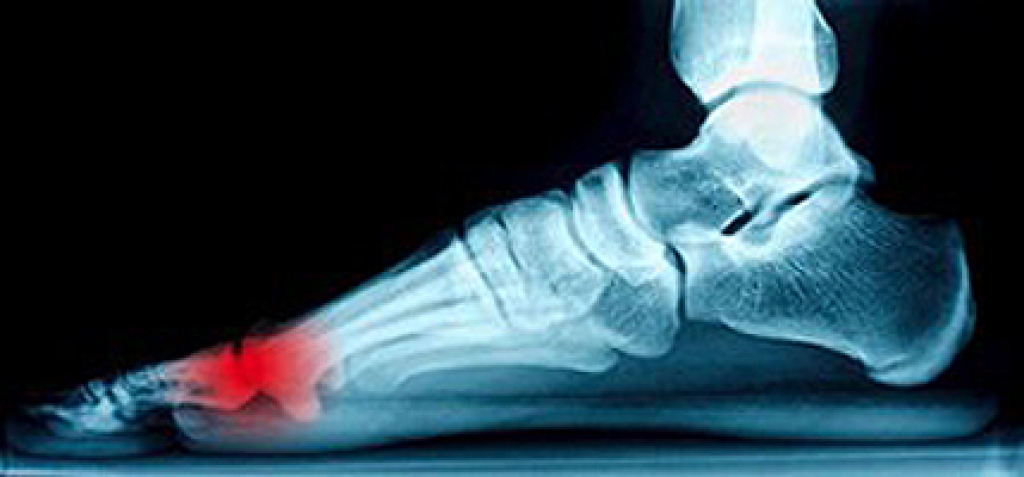Dallas Metro / North Texas
(214) 710-1028
Blog
What Causes Tarsal Tunnel Syndrome?
 A common cause of the condition that is referred to as tarsal tunnel syndrome may occur as a result of constant overuse of the ankle. The most common reason for this to happen may be from power walking, frequent running, or standing for the majority of the day. It typically affects the nerve that is on the inside of the foot and ankle, and when this becomes damaged, inflammation and tenderness may occur. Research has shown the importance of treating tarsal tunnel syndrome promptly to avoid the possibility of permanent nerve damage from developing. Treatment options may begin with resting and elevating the foot, which may reduce inflammation, in addition to taking anti-inflammatory medications, which may help in alleviating a portion of the pain that often accompanies this condition. If you feel you may have tarsal tunnel syndrome, please speak to a podiatrist as quickly as possible for a proper evaluation and to discuss the best treatments techniques for you.
A common cause of the condition that is referred to as tarsal tunnel syndrome may occur as a result of constant overuse of the ankle. The most common reason for this to happen may be from power walking, frequent running, or standing for the majority of the day. It typically affects the nerve that is on the inside of the foot and ankle, and when this becomes damaged, inflammation and tenderness may occur. Research has shown the importance of treating tarsal tunnel syndrome promptly to avoid the possibility of permanent nerve damage from developing. Treatment options may begin with resting and elevating the foot, which may reduce inflammation, in addition to taking anti-inflammatory medications, which may help in alleviating a portion of the pain that often accompanies this condition. If you feel you may have tarsal tunnel syndrome, please speak to a podiatrist as quickly as possible for a proper evaluation and to discuss the best treatments techniques for you.
Tarsal tunnel syndrome can be very uncomfortable to live with. If you are experiencing tarsal tunnel syndrome, contact Kellvan Cheng, DPM of Elite Foot & Ankle. Our doctor can provide the care you need to keep you pain-free and on your feet.
Tarsal Tunnel Syndrome
Tarsal tunnel syndrome, which can also be called tibial nerve dysfunction, is an uncommon condition of misfiring peripheral nerves in the foot. The tibial nerve is the peripheral nerve in the leg responsible for sensation and movement of the foot and calf muscles. In tarsal tunnel syndrome, the tibial nerve is damaged, causing problems with movement and feeling in the foot of the affected leg.
Common Cause of Tarsal Tunnel Syndrome
- Involves pressure or an injury, direct pressure on the tibial nerve for an extended period of time, sometimes caused by other body structures close by or near the knee.
- Diseases that damage nerves, including diabetes, may cause tarsal tunnel syndrome.
- At times, tarsal tunnel syndrome can appear without an obvious cause in some cases.
The Effects of Tarsal Tunnel Syndrome
- Different sensations, an afflicted person may experience pain, tingling, burning or other unusual sensations in the foot of the affected leg.
- The foot muscles, toes and ankle become weaker, and curling your toes or flexing your foot can become difficult.
- If condition worsens, infections and ulcers may develop on the foot that is experiencing the syndrome.
A physical exam of the leg can help identify the presence of tarsal tunnel syndrome. Medical tests, such as a nerve biopsy, are also used to diagnose the condition. Patients may receive physical therapy and prescriptive medication. In extreme cases, some may require surgery.
If you have any questions please contact our office located in Carrollton, TX . We offer the newest diagnostic and treatment technologies for all your foot and ankle needs.
The Location of the Sesamoid Bones
 The bones that are found surrounding the joints in the foot are referred to as sesamoid bones. Research has confirmed the big toe contains different types of these particular bones and they have specific functions, which includes providing stability while walking. If an injury should occur to one or more of these bones, inflammation is likely to develop and this typically results in severe pain and discomfort. This is referred to as sesamoiditis, and generally occurs from repetitive activity that may be associated with dancing, basketball, or tennis. Patients who experience this condition often notice gradual pain developing in the foot, in addition to swelling and tenderness surrounding the affected joint. The first phase of treatment will often include rest and cessation from the activity that has caused this ailment. It’s suggested to speak to a podiatrist if you are afflicted with sesamoiditis for further treatment options that are correct for you.
The bones that are found surrounding the joints in the foot are referred to as sesamoid bones. Research has confirmed the big toe contains different types of these particular bones and they have specific functions, which includes providing stability while walking. If an injury should occur to one or more of these bones, inflammation is likely to develop and this typically results in severe pain and discomfort. This is referred to as sesamoiditis, and generally occurs from repetitive activity that may be associated with dancing, basketball, or tennis. Patients who experience this condition often notice gradual pain developing in the foot, in addition to swelling and tenderness surrounding the affected joint. The first phase of treatment will often include rest and cessation from the activity that has caused this ailment. It’s suggested to speak to a podiatrist if you are afflicted with sesamoiditis for further treatment options that are correct for you.
Sesamoiditis is an unpleasant foot condition characterized by pain in the balls of the feet. If you think you’re struggling with sesamoiditis, contact Kellvan Cheng, DPM of Elite Foot & Ankle. Our doctor will treat your condition thoroughly and effectively.
Sesamoiditis
Sesamoiditis is a condition of the foot that affects the ball of the foot. It is more common in younger people than it is in older people. It can also occur with people who have begun a new exercise program, since their bodies are adjusting to the new physical regimen. Pain may also be caused by the inflammation of tendons surrounding the bones. It is important to seek treatment in its early stages because if you ignore the pain, this condition can lead to more serious problems such as severe irritation and bone fractures.
Causes of Sesamoiditis
- Sudden increase in activity
- Increase in physically strenuous movement without a proper warm up or build up
- Foot structure: those who have smaller, bonier feet or those with a high arch may be more susceptible
Treatment for sesamoiditis is non-invasive and simple. Doctors may recommend a strict rest period where the patient forgoes most physical activity. This will help give the patient time to heal their feet through limited activity. For serious cases, it is best to speak with your doctor to determine a treatment option that will help your specific needs.
If you have any questions, please feel free to contact our office located in Carrollton, TX . We offer the newest diagnostic and treatment technologies for all your foot care needs.
Blog Archives
- 2025
- 2024
- 2023
- 2022
- 2021
- 2020
- 2019
- 2018
- 2017







